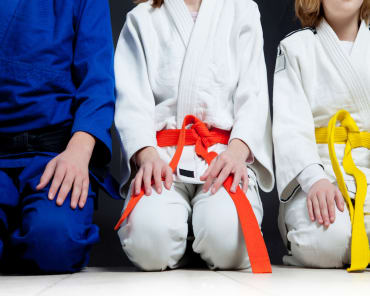Starting Brazilian Jiu-Jitsu (BJJ) can be an exciting yet nerve-wracking experience. You might feel unsure about what to expect or how to prepare for your first class, but don’t worry! This comprehensive guide will walk you through everything you need to know as a beginner, so you can step onto the mat with confidence.
1. What to Wear and Bring
For your first class, comfort is key. If you don’t have a gi (the traditional Jiu-Jitsu uniform) yet, most gyms will allow you to wear athletic clothing. A basic T-shirt or rash guard and a pair of shorts or leggings will do just fine. Avoid anything with zippers, buttons, or sharp objects that could scratch you or your training partners.
Bring a water bottle to stay hydrated, and don’t forget to pack a towel if you tend to sweat a lot. Some gyms may provide rental gis for new students, but it's always a good idea to call ahead and check their policy on uniforms.
2. Arriving at the Gym
Try to arrive at least 10-15 minutes early. This will give you enough time to introduce yourself to the instructor, fill out any necessary paperwork, and warm up before class begins. Most gyms will give you a tour of the facility and explain the class structure, helping you feel more at ease.
Before stepping onto the mat, take off your shoes. BJJ mats are kept clean for hygiene reasons, so it’s important to respect this rule. Make sure your fingernails and toenails are trimmed to prevent accidentally scratching yourself or others.
3. Class Structure
Most beginner BJJ classes follow a similar format, which typically includes a warm-up, technique drilling, and sparring (often referred to as “rolling”). Here’s what to expect during each part of class:
Warm-Up: The class usually starts with a warm-up to get your body moving and muscles ready for training. This may include jogging, jumping jacks, or mat-specific movements like shrimping (a technique used to escape from bad positions) and hip escapes. Don’t worry if you’re unfamiliar with these terms—your instructor will demonstrate everything, and your classmates will help you if you’re unsure.
Technique Drilling: After warming up, the instructor will introduce a specific technique or series of moves. These techniques might involve submissions, escapes, or sweeps. Your instructor will demonstrate the move in slow detail, then you’ll practice it with a partner. Take your time and focus on the fundamentals. BJJ is a highly technical martial art, so it’s important to develop a strong foundation.
Sparring (Rolling): Sparring, also called rolling, is when you have the chance to practice techniques in a live, but controlled, environment. In your first few classes, you may or may not participate in sparring. If the instructor does allow you to spar, you’ll likely be paired with a more experienced student who will guide you and keep things at a beginner’s pace. Don’t worry about trying to win or outperform others—focus on learning and staying relaxed.
4. What You’ll Learn in Your First Class
As a beginner, your first class will likely introduce you to some fundamental concepts and movements that form the core of Jiu-Jitsu. These may include:
Basic Positions: You’ll learn about dominant positions, like side control, mount, and guard. Understanding these positions is key to progressing in Jiu-Jitsu because they provide the framework for both offense and defense.
Escapes and Submissions: Your instructor might teach you basic submissions, such as an armbar or rear naked choke, along with simple escape techniques. Don’t worry if these techniques feel complicated at first—it takes time to develop muscle memory.
Grips and Balance: You’ll get a sense of how to grip your opponent’s gi or body in a way that allows you to control them. You’ll also begin to understand how to maintain balance and posture, both crucial aspects of Jiu-Jitsu.
5. Class Etiquette
Jiu-Jitsu has its own set of rules and etiquette, designed to foster respect and safety. Here are a few key points to keep in mind:
Respect Your Training Partners: Always be respectful of your training partners, regardless of their skill level. Everyone is there to learn and improve, so avoid using excessive force or trying to dominate them.
Tap Early, Tap Often: When practicing submissions, don’t hesitate to tap (a signal of submission) if you feel trapped or uncomfortable. This is crucial to prevent injury. Your training partner will immediately stop the technique once you tap.
Listen to the Instructor: Pay close attention when the instructor is demonstrating a move or giving feedback. They’re there to help you improve and guide your progress.
6. Expect to Be Challenged
Your first class might feel overwhelming, and that’s okay! Brazilian Jiu-Jitsu is a complex art with many layers, and no one becomes proficient overnight. You may struggle with new movements or feel awkward in certain positions, but this is part of the learning process. Be patient with yourself and embrace the journey.
7. Building a Routine
Consistency is key in Jiu-Jitsu. After your first class, consider setting a routine that works for your schedule, whether it’s attending classes once or twice a week. Over time, you’ll notice improvements in both your technique and fitness.
Conclusion
Your first Jiu-Jitsu class is the beginning of an exciting journey. By understanding what to expect and how to prepare, you’ll be able to step onto the mat with confidence. Remember to keep an open mind, focus on learning, and most importantly—enjoy the process!






